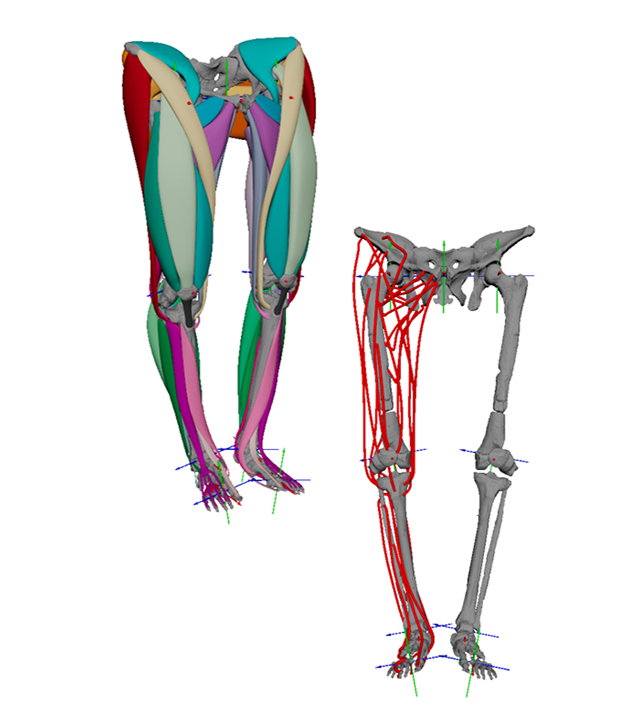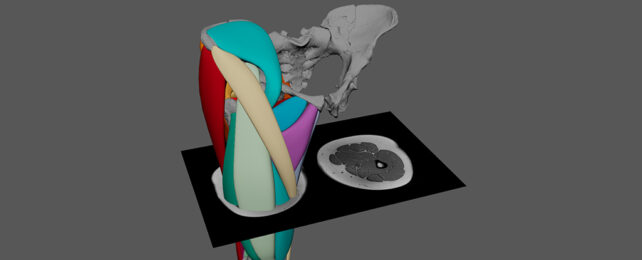For paleoanthropologists, the question of when our ancestors started spending more time walking over flat ground than hanging around in trees is a fascinating one – and it's something that new research gives us a better understanding of.
Using 3D modeling software, a scientist reconstructed the muscles of the 3.2 million-year-old AL 288-1 fossil, better known as 'Lucy'. The models show Lucy had strong leg and pelvic muscles for clinging to trees and knee muscles that allowed upright walking.
The fossil belongs to the Australopithecus afarensis species, an early hominin. The researcher behind the work, paleoanthropologist Ashleigh Wiseman from the University of Cambridge in the UK, says this tells us much more about how the species lived.
"Australopithecus afarensis would have roamed areas of open wooded grassland as well as more dense forests in East Africa around 3 to 4 million years ago," says Wiseman.
"These reconstructions of Lucy's muscles suggest that she would have been able to exploit both habitats effectively."

The Lucy fossil was discovered in the 1970s. While it was already well accepted that A. afarensis could walk, debate continues about whether this bipedalism was more of a chimp-style waddle or something akin to the upright gait seen in modern humans.
Wiseman used the latest computer modeling tools to reconstruct the soft tissue that didn't survive with the fossil. Starting with what we know of living human muscle and bone structures, Wiseman worked backward, looking at clues on the AL 288-1 fossil, including its dimensions, structure, and the traces muscles leave where they attach to the bone.
The powerful muscles that were generated through the models show that Lucy would've been able to stand upright. A total of 36 muscles in each leg were reconstructed, most larger and taking up more space than their equivalents in modern-day people.
"Lucy's ability to walk upright can only be known by reconstructing the path and space that a muscle occupies within the body," says Wiseman.
"We are now the only animal that can stand upright with straight knees. Lucy's muscles suggest that she was as proficient at bipedalism as we are while possibly also being at home in the trees. Lucy likely walked and moved in a way that we do not see in any living species today."
A. afarensis were shorter than we are, with smaller brains and ape-like faces. They would also have had a much lower fat-to-muscle ratio in their legs; major muscles in Lucy's thighs and calves would've been over twice the size we see in humans.
It's the first time that the soft tissue of an early human ancestor has been reconstructed in this way, but it's unlikely to be the last. The same modeling technique could be used on other fossils, and while some guesswork is still involved, the computational methods that researchers now have at their disposal are better than ever.
"Muscle reconstructions have already been used to gauge running speeds of a T. rex, for example," says Wiseman.
"By applying similar techniques to ancestral humans, we want to reveal the spectrum of physical movement that propelled our evolution – including those capabilities we have lost."
The research has been published in Royal Society Open Science.
